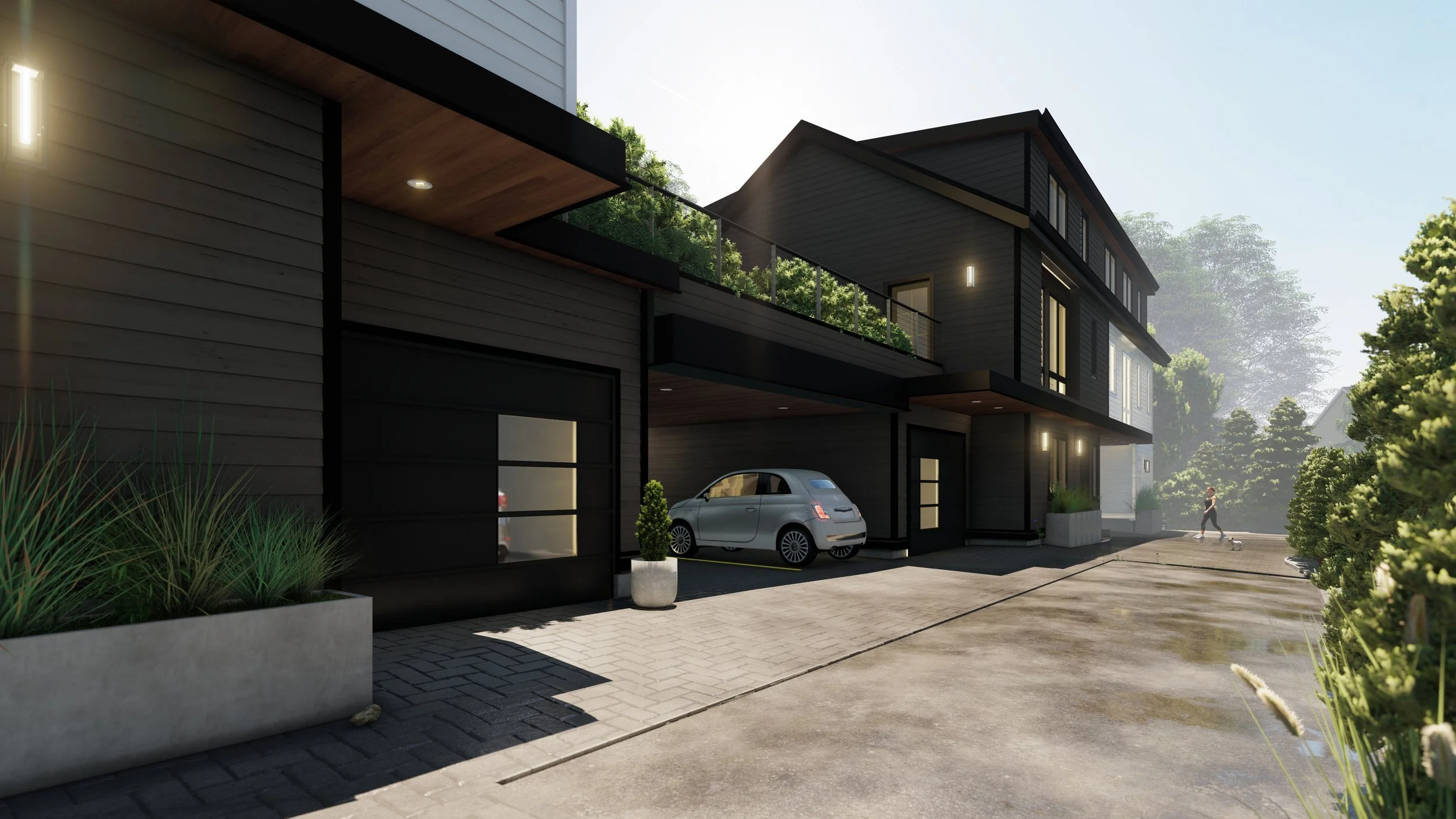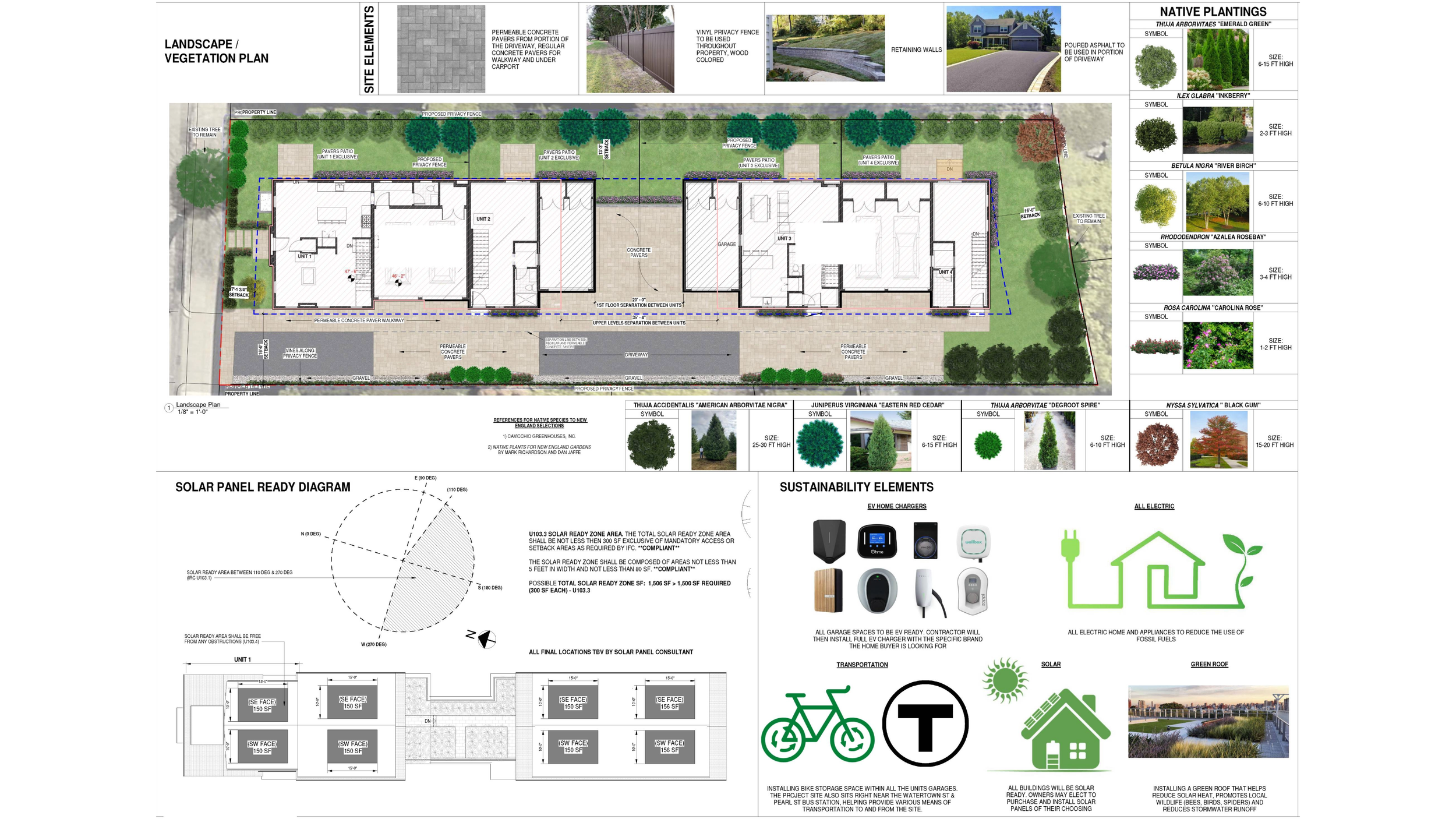Aligning Cost-Effectiveness, Sustainability, and Code Compliance in Residential Design
In an era when more housing is greatly needed, and sustainability and energy efficiency are at the forefront of public policy, MA residential developers find it increasingly challenging to balance environmental responsibility with financial feasibility.
Navigating the stringent new building codes and evolving sustainability expectations can often require innovative solutions to make a project cost-effective. This article addresses the overarching themes and concerns currently impacting the MA real estate development market and ways we approach the complexities of adapting to new regulations and consumer expectations through residential design.
Grid Concerns over Electric Transitions
As cities such as Brookline and Newton transition away from fossil fuels and towards all-electric systems for new buildings, there is uncertainty surrounding the electrical grid's current capacity to accommodate the increasing energy loads. According to the Institute for Energy Research in the article, "Massachusetts Utilities Ask for Rate Increases to Convert the Grid to Renewable Energy and Massive Electrification," Eversource and National Grid are trying to enhance the power grid to handle the surge in electrification and convert it for renewable energy production in the coming years. The funding would primarily come from ratepayers, raising rates over a five-year period. While this transition presents opportunities for innovation and efficiency, the push for electrification is happening faster than the US can accommodate, and the grid conversion from fossil fuels to renewable energy sources will take years to complete and cost a considerable amount. Admittedly, this is a complex issue to solve. A thoughtful approach based on careful consideration in the design and construction of homes can help reduce energy consumption through Passive House or other efficiency standards.
Understanding ROI with the New Energy Codes
While pursuing sustainable paths in residential development is ideal, complexities arise regarding the cost of sustainable construction. Despite some homebuyers being well-informed about the value of homes built to sustainable building standards, such as Passive House, and willing to pay a premium for these methods, the current cost disparity compared to traditional construction poses a challenge that can deter market interest. As Passive House construction becomes more competitive with conventional construction, it would benefit our industries to increase public awareness about these standards while being backed by a clear and more transparent home rating system to help guide the home purchasing process.
The new energy standards for MA housing aim to improve insulation and mechanical systems and lower homeowners' monthly utility bills. However, with the costs of new systems, upgrades, and materials, it may take years to recoup the initial investment through energy savings. Careful analysis should go into each project to explore the options that will both meet building requirements and maximize efficiencies within the confines of the project budget.
Identifying Efficiencies within Given Circumstances
The shift to all-electric systems has begun, affecting new projects or renovations and additions that meet particular conditions in a few communities. Electric systems have come a long way over the years. Still, the improvements must catch on to consumer preferences and face existing views on electric heatings' past reputation for poorer performance in larger homes. As mentioned, making progress involves increasing public awareness and shedding light on the evolving standards.
Changes to a property outside the home are also not without challenges, of course. For instance, the new tree ordinance in Brookline has increased the vegetation replacement requirements to more than just what has been removed. In addition, there are protective tree ordinances to work around. This can easily span into a neighbor's yard or other surroundings in densely populated neighborhoods, so careful landscape planning is necessary to work within the requirements.
One of our recent multi-family projects in Brookline on a unique site zoned for business but granted a special permit for exclusive residential use required a move to all-electric, and we viewed this as an opportunity. The four units were each designed to match the average size of single-family homes in the area, roughly 2500 square feet per unit. Moreover, we integrated eco-friendly elements such as EV chargers, a green roof, and designated bicycle areas for further residential context. We also opted for landscaping with native plants, strategically preventing rainwater runoff. This approach facilitates the seamless development integration into the neighborhood and champions sustainable living practices.
Below is a landscape/vegetation plan referencing the possibility of sustainable elements for a new development property.
Perks of the New Codes
Despite the challenges posed by the new building codes, they come with many benefits for housing developments. One notable advantage is installing smaller heating units, which will operate less frequently, leading to cost savings and heightened energy efficiency. Furthermore, integrating more energy-efficient practices such as enhanced insulation, carefully selected materials, utilization of ERV systems, and pursuing lower HERS ratings promises to deliver improved temperature control and overall air quality within each dwelling. These advantages contribute positively to the environment and significantly enhance the overall livability and desirability of the properties.
Maximizing the Home and Landscape
Designing with the optimal utilization of floor area ratio (FAR) is usually paramount to a project, yet it can present challenges when adding essential features such as garage space. With one of our recent two-family projects, for instance, a garage addition would have taken away a portion of the first floor’s FAR. After careful analysis, we found an alternative route to add the garage onto the basement level and avoid removing any first-floor space. By pushing the building back to accommodate the slope, our team could add the garage while maintaining the maximum FAR.
Amidst the challenges and complexities of the new codes that promote sustainable development, there is undeniable momentum toward embracing eco-friendly solutions. Prioritizing innovation and collaboration between partners is essential to pave the way for continued project success and resilient communities.


